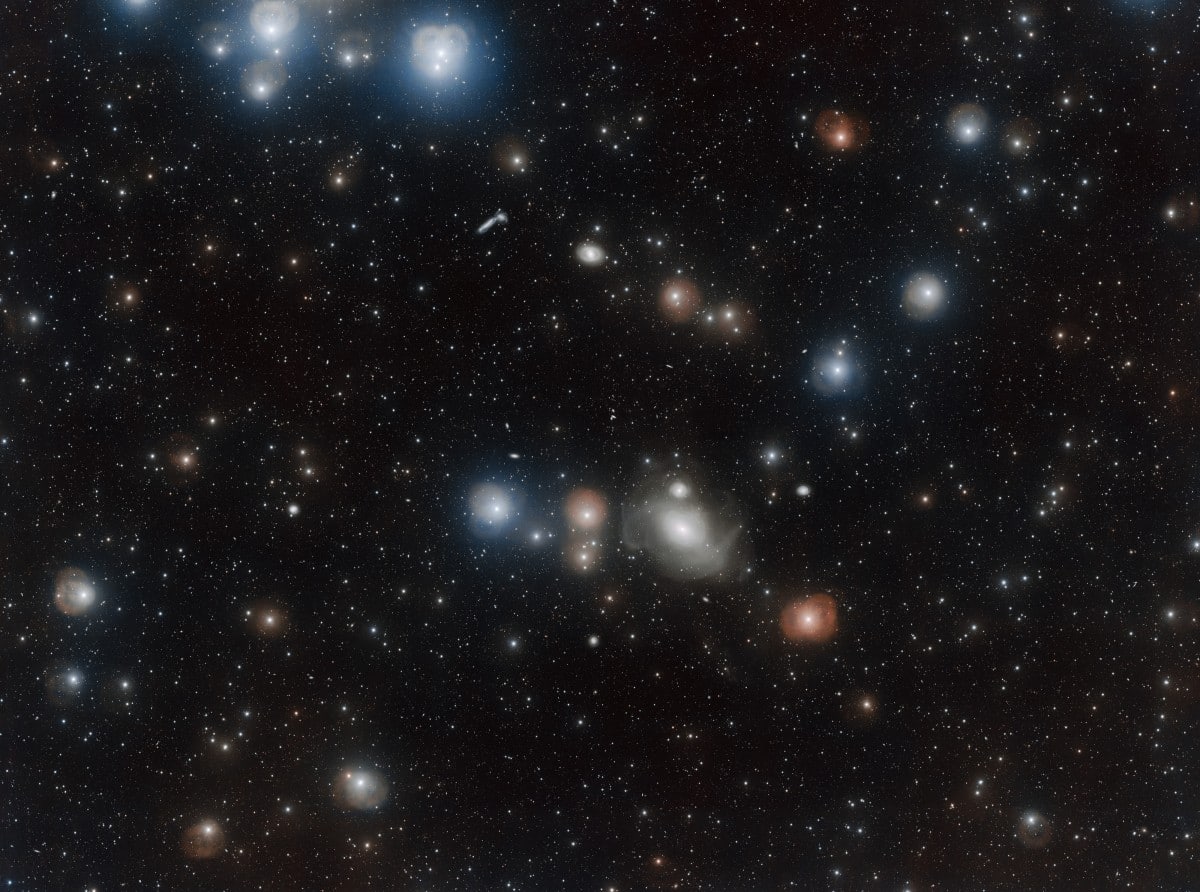
For decades, the galaxy NGC 1316 has been a popular object for research among astronomers and yet, it still poses a mystery to scientists. The galaxy in the Fornax constellation, about 60 million light-years away from Earth, is only visible in the southern hemisphere and is surrounded by the much larger neighboring constellation Eridanus. A few billion years ago, the galaxy was initially formed by a collision and subsequently a fusion with another galaxy. Later, further small galaxies were assimilated.
Through gravitational distortions over the course of it time, the galaxy formed its lenticular structure and pronounced wave structures, rings, and circular arcs in the starry outer shell. The mergers resulted in an inflow of gas and a supermassive black hole at the center with an estimated mass of 150 million solar masses. NGC 1316 is the brightest galaxy of the Fornax cluster.

Detection of galaxies like NGC 1316 is extremely important
“The explanation of galaxy formations due to the fusion of smaller precursors is currently an important cornerstone of our cosmological models and theories,” says Dr. Peter Kamphuis of the Ruhr University Bochum (RUB). “Therefore, the detection of galaxies like NGC 1316 is extremely important.” In addition, astronomers could use galaxies like these in order to study the physical processes and sequences of one or more mergers in more detail, as well as the influence on the evolution of galaxies.
Based on theoretical calculations, astronomers have long been convinced that NGC 1316 should contain a lot of hydrogen. So far, however, there has been no proof. Now, scientists of the RUB close to Dr. Peter Kamphuis under the leadership of Prof. Dr. Paolo Serra of the Italian Istituto Nazionale di Astrofisica, have found hydrogen. From these results, they can now develop a more precise theory on the galaxy formations. “NGC 1316 is a very well-known object among astronomers,” says Peter Kamphuis. “It is one of the brightest radio sources and the textbook example of a radio galaxy.”
According to the researchers, the composition of the cold interstellar medium of the galaxy is very unusual. The proportion of hydrogen and helium is 98 percent, only two percent are heavy dust particles. The interstellar medium, which “forms stars when giant gas clouds collapse under their own mass”, is an important component of a galaxy. But at NGC 1316, according to Paolo Serra, scientists have observed a large proportion of the interstellar medium in the form of dust.

© ESO[/caption]
More precise theories on galaxy formations
In the course of their research, astronomers have discovered that one of the original galaxies from which NGC 1316 originated was gigantic and had a deficit of cold interstellar medium. The second galaxy was about ten times smaller and not unlike our Milky Way. Since it had a lot of cold dust, this small galaxy brought enough dust into NGC 1316 which gave an explanation for the observation. “However, the small galaxy should also have brought a lot of hydrogen with it which is added to the system – but it had not been found,” says Peter Kamphuis.
Until now. Now, the researchers were able to solve the mystery. “We were able to demonstrate that the hydrogen is distributed in two long, very weak gas filaments that protrude very far away from the galaxy,” explains Paolo Serra. The amount of hydrogen that could be measured would be the same as expected if a large galaxy were to merge with a smaller milky way galaxy. “Thanks to these new observations, we have put all the pieces of the puzzle together and now have a more accurate and coherent theory of galaxy formation,” summarizes Peter Kamphuis.
The work was funded by the European Research Council (PE9 ERC-2015-STG – Galaxy evolution in dense environments) and through the collaborative research of the Federal Ministry of Education and Research in the project D-Meerkat: A German contribution to the further development of radio astronomy in the centimetric wavelength range.
The results of the current research were published in the journal Astronomy and Astrophysics.
Click here for more articles on astronomy








